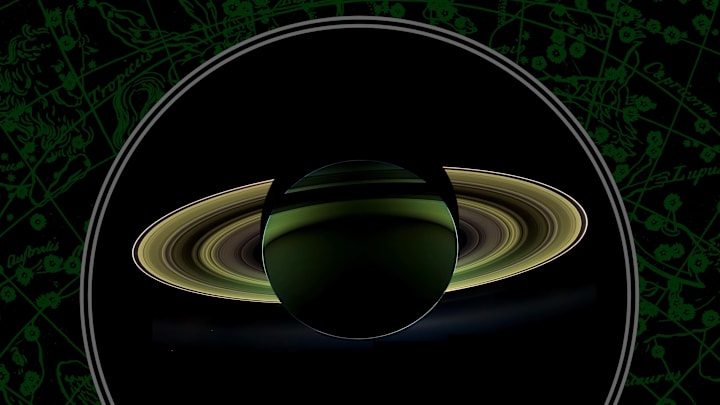Though Saturn is not the only ringed planet, it boasts the most spectacular circlets of ice and rock in our solar system. On August 26–27, 2023, you’ll have a better view of them than usual when Saturn reaches opposition. Here’s what you need to know about the annual event.
What is Saturn at Opposition?
Opposition describes a planet’s position in relation to the sun and Earth. When Saturn aligns with these two bodies, with Earth in the middle and Saturn on the outer edge, it reaches opposition. From our vantage point, we can watch the sun’s light fully illuminate Saturn’s surface. The second-largest planet will also appear on the opposite side of the night sky: as the sun sets in the west, Saturn will be visible in the east.
Jupiter, Saturn, Uranus, and Neptune—the solar system’s gas giants and ice giants [PDF], respectively—reach opposition roughly once per Earth year. Because Mars and Earth are closer together in their orbits, Mars reaches opposition about once every 27 months. Venus and Mercury cannot reach opposition because their orbits are always between Earth and the sun.
How to See Saturn at Opposition
Saturn will rise around sunset on August 26, 2023, and slide under the horizon by dawn on August 27. It will reach opposition at 4 a.m. Eastern Daylight Time. A waxing gibbous moon may reflect some light into the night sky, but it won’t wash out the show.
When searching for Saturn, look for Aquarius. The planet will appear directly in front of the water-bearer and will travel through nearby Capricorn. Though you will be able to see Saturn through a pair of binoculars, you’ll need a basic telescope to detect the rings around the planet. Refer to a sky chart if you get lost.
